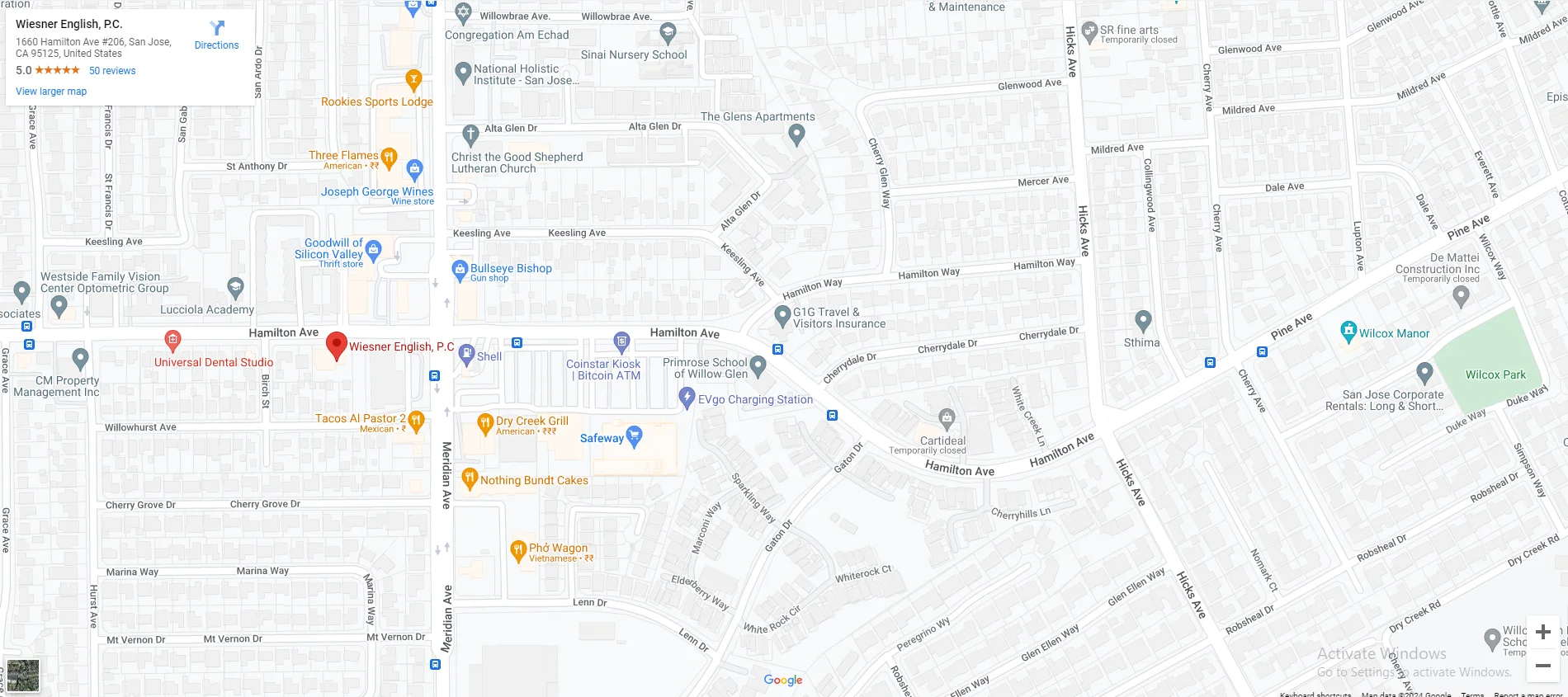Alphabet Soup of Workers’ Compensation, Part III—Special issues

In my first post, we covered issues that arise earlier in a case (AWW, TD, PTPs, WPI, RFAs, UR and IMR). Part II covered some of the common issues (and shorthand) that would come up later in a case (P&S, stips, C&R, MSA, F&A). Though uncommon, there are particular issues that might exist in a case depending, as always, on the circumstances. This post will cover a couple that pertain to employer’s roles in the injury and aftermath and a couple that can apply based on the degree of the injury and the nature of the injury.
LP and TPD—Life Pensions and Total Permanent Disability
If an injury results in 70% to 99% permanent partial disability, an injured employee is entitled to a “life pension” (LP) payable after the regular disability payments end. (Labor Code § 4659(a).) If injury causes 100% permanent total disability (PTD), payments are made at the temporary disability rate instead of the permanent disability rate.
S&W—Serious and Willful Misconduct
An injury arising out of Serious and Willful (S&W) misconduct can impact benefits. The benefits can either be increased by half if caused by my employer’s S&W misconduct (Labor Code § 4553). Or reduced by half if caused by my own S&W misconduct (Labor Code § 4552). These claims can have a great impact these claims can have on an employee’s life and employer’s balance sheet. Repeatedly, cases have elaborated that S&W misconduct requires more than negligence or even gross negligence.
For an employer to be found responsible a S&W act, an intentional act must occur along with either the intent to harm, knowledge that serious injury is a probable result, or an affirmative and reckless disregard for another person’s safety. (See Mercer-Fraser Co. v. Industrial Acc. Com. (Soden) (1953) 18 Cal. Comp. Cases 3). As most work injuries arise from accidents, the intentional act is often missing. Likewise, injuries don’t occur under an intersection of actual knowledge of a dangerous condition, knowledge it’s probably going to cause a serious injury, and a purposeful failure to start or initiate any remedial measures.
But it’s certainly not unheard of. Unfortunately, some employers simply do not take safety seriously, even when actually knowing a serious injury is likely.
While violating a safety order can support a S&W claim, the violation must also, of course, be part of the cause of the injury and either the order and conditions making it applicable were known or the condition making it applicable was obvious and created a probability of serious injury and the failure to correct constituted a reckless disregard for the probable injury. (Labor Code § 4453.1.)
What conduct DOES qualify as Serious and Willful Misconduct?
- A prison ignoring credible notice of a pending attack on staff by inmates with supervisory staff failing to forward memos to superiors and managment’s failure to follow protocol requiring investigation of threat and locking down prison thereby creating a “deliberate failure” to act and a reckless disregard for employee safety. (State of California v. WCAB (2020) 85 Cal. Comp. Cases 811.)
- Failing to warn a teacher of a student’s violent tendencies evidenced by a history of fixating anger on a particular teacher and physically attacking teachers when the student was physically larger than the teacher increasing the chances of a serious injury. (Sauceda v. Fresno Unified School District, 2020 Cal. Wrk. Comp. P.D. LEXIS 137.)
- Failing to provide fall protection equipment when foreman was present and knew or consented to roof work without protection equipment and employer violated a Cal/OSHA safety orders when the conditions making the orders applicable were obvious. (Leyva v. B & B Roof Preparation Inc. 2018 Cal. Wrk. Comp. P.D. LEXIS 54.)
What does NOT qualify as conduct rising to the level of Serious and Willful Misconduct?
- Injury due to a co-worker who regularly drove at unsafe speeds which was known to foreman but without direct evidence the co-worker was driving at unsafe speeds at the time the injury was caused. (Alcala v. Fernandez Brothers, Inc./Paraiso Organics, Inc., 2019 Cal. Wrk. Comp. P.D. LEXIS 442.)
- Failure to consider the effect of poor weather when sending a mechanic to perform a roadside repair at night. (Joaquin (dec’d) et al v. San Diego Unified School District, 2018 Cal. Wrk. Comp. P.D. LEXIS 460.)
- Using forklift boom extensions from an aftermarket manufacturer that did not comply with Cal/OSHA requirements when the employer did not know of the non-compliance thereby showing no knowledge of the violation of the safety order. (Rosas v. Laurence-Hovenier, Inc., 2018 Cal. Wrk. Comp. P.D. LEXIS 466)
132a—Discrimination for Claiming a Work Injury or Pursuing Workers’ Compensation Benefits
Under Labor Code section 132a, an employer cannot legally fire, threaten to fire, or otherwise discriminate against an employee for seeking workers’ compensation benefits or receiving a rating of disability, award, or settlement. An employer can terminate an employee for any lawful reason while a workers’ compensation case is open. In other words, workers’ compensation does not offer enhanced job protection, but it does prohibit discrimination based on claiming workers’ compensation benefits.
Results of a 132a claim can include increased compensation, costs and expenses, reinstatement of a position, and reimbursement for lost wages and benefits.
When does employer conduct become discriminatory under Labor Code section 132a?
- Telling an employee to clear our their locker two weeks after settling a workers’ compensation case without having any evidence of a for cause termination, termination due to business necessity, or any other valid defense. (Hamidullah Sarwary v. Walgreens Family of Companies, 2021 Cal. Wrk. Comp. P.D. LEXIS 178.)
- Terminating an employee following a workers’ compensation claim without a legitimate business need and through a process that deviated from the employer’s usual procedures and disciplinary protocols. (Sheila Marie Williams Jones v. AC Transit, 2021 Cal. Wrk. Comp. P.D. LEXIS 66.)
- Demoting an employee after a medical legal evaluator documented work restrictions without providing any reason for the demotion or any evidence of a non-discriminatory business need. (Esther Garcia v. Antelope Valley Union High School District, 2020 Cal. Wrk. Comp. P.D. LEXIS 131.)
What can employers legally do without violating Labor Code section 132a?
- Terminating an injured worker close in time to a release to full duties because the employer stopped doing HVAC work and the injured worker was the only employee licensed to perform that work. (Alejandro Llort v. Pete Fer & Son Plumbing 2021 Cal. Wrk. Comp. P.D. LEXIS 330.)
- Terminating an employee due to unexcused absences before the work injury and starting the termination process before reporting the work injury. (Carlos Loera v. Northrop Grumman, 2021 Cal. Wrk. Comp. P.D. LEXIS 340.)
- Terminating an employee two months after a work injury, after modified duty was offered, when defendant could show failure to comply with company policy and multiple write-ups, some pre-dating the work injury. (Joseph Charletta v. Barrett Business Services, Inc., 2021 Cal. Wrk. Comp. P.D. LEXIS 86.)
SIBTF—Subsequent Injury Benefits Trust Fund Cases
What if an injury leaves someone totally permanently disabled but less than 100% of the disability is due to the work injury? What if some is apportioned to prior injuries or chronic conditions? What if the work comp injury is due to one hand and the other was disabled before and that combination leaves someone totally disabled? The Subsequent Injuries Benefits Trust Fund or SIBTF was designed to address situations like these. Such a case can help fill the gap between a work comp injury that’s less than 100% disabling and the reality of 100% disability due to a combination of the work comp injury and prior disabilities or limitations. These cases do not carry work comp benefits like medical care or temporary disability, but in cases where prior injuries and a work injury combine to leave someone totally disabled, they can be a true and necessary life-line.
My Partner Tim and I are both experienced in litigating the above issues. If there is any concern your claim might involve any of the above, please reach out for a free consultation immediately.
Request A
Free Consultation
Fields marked with an * are required





